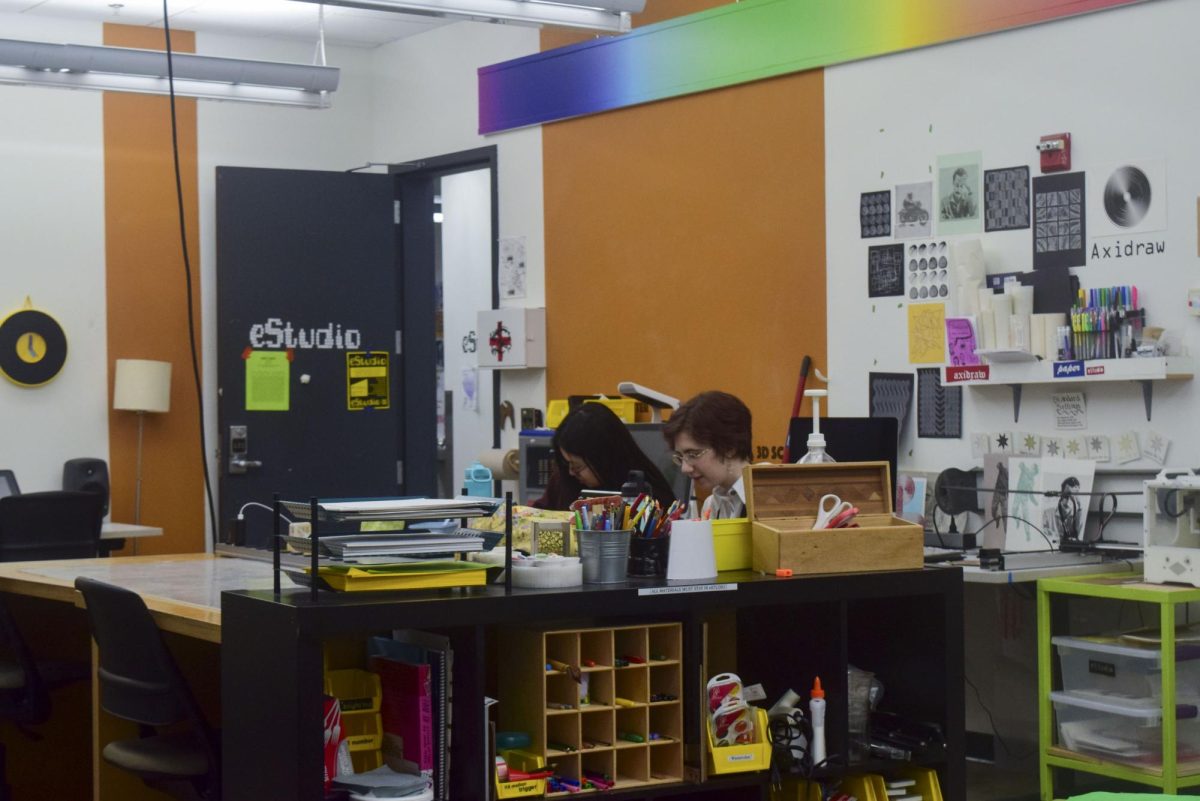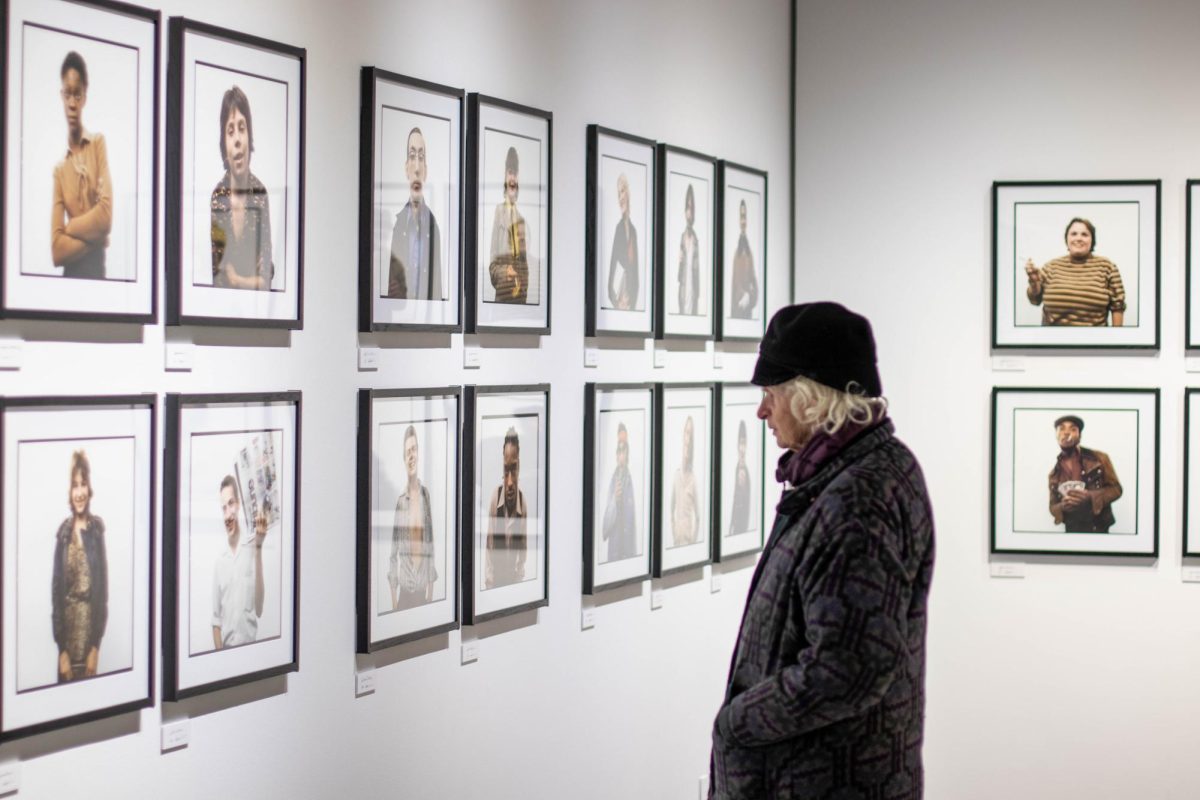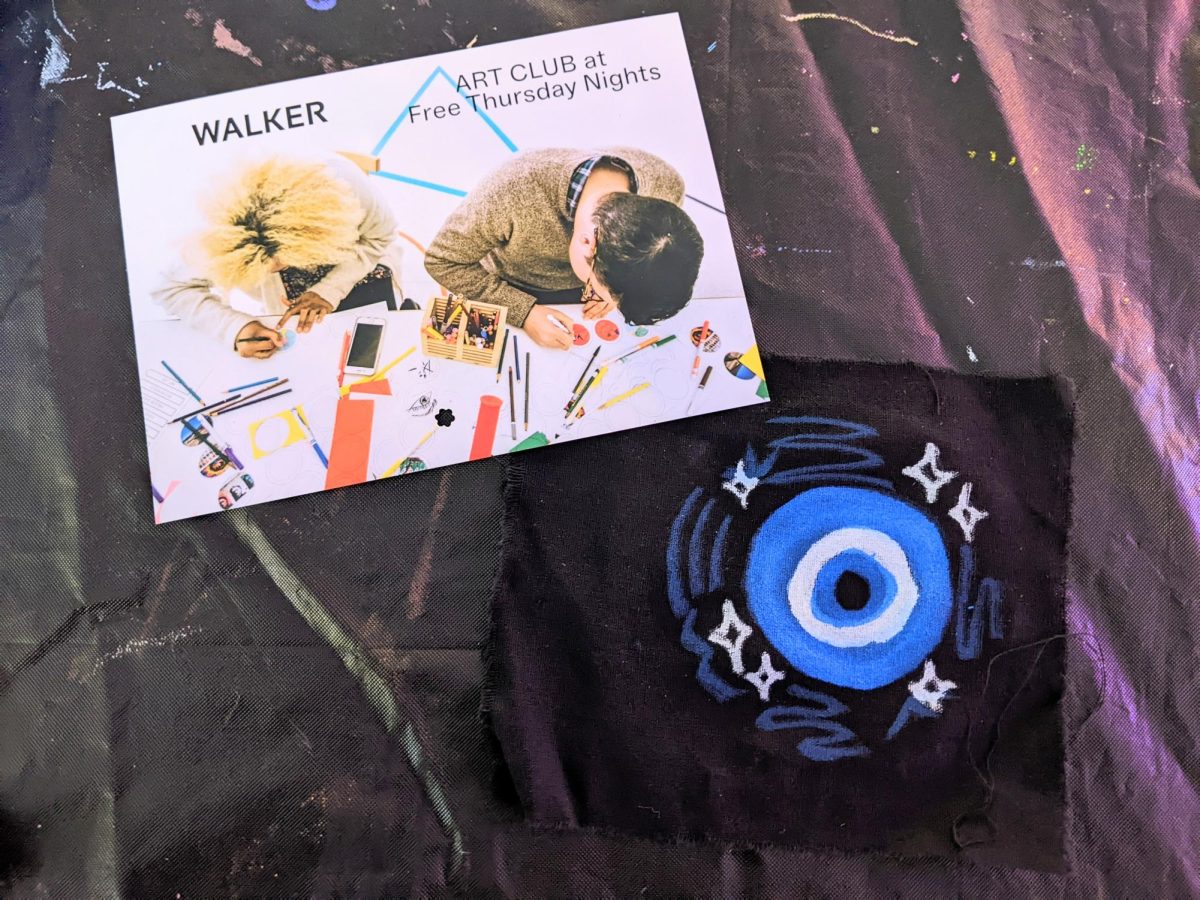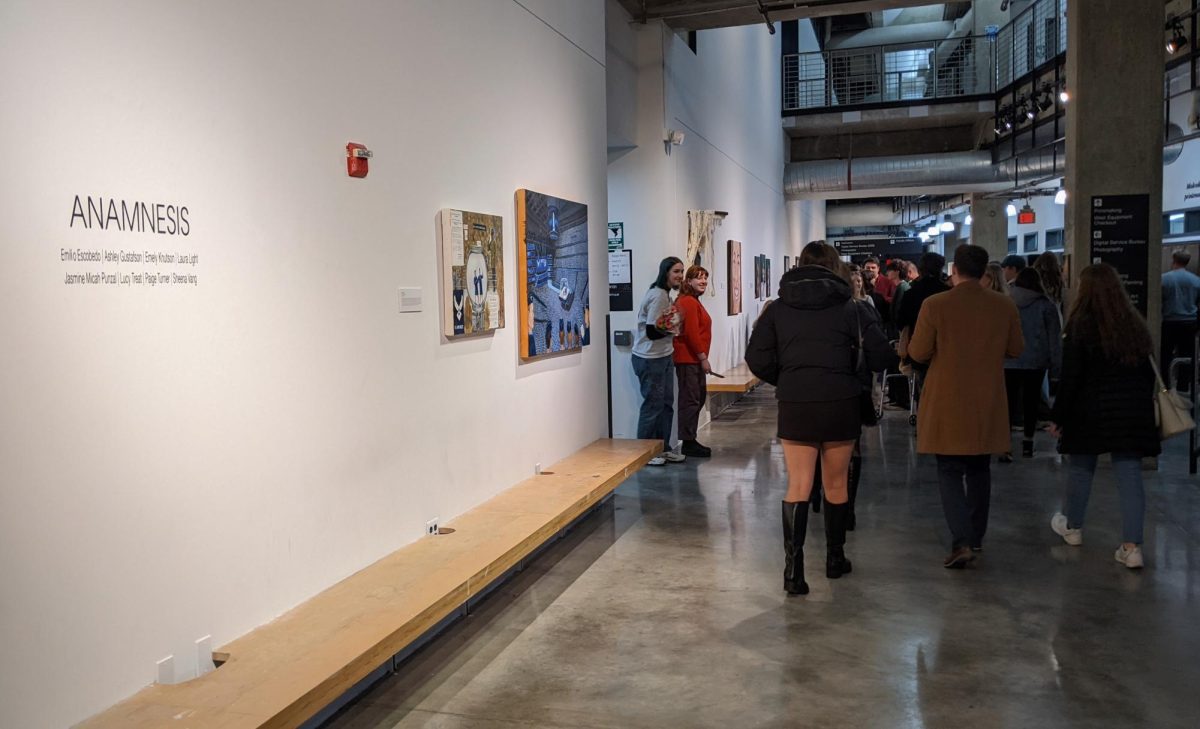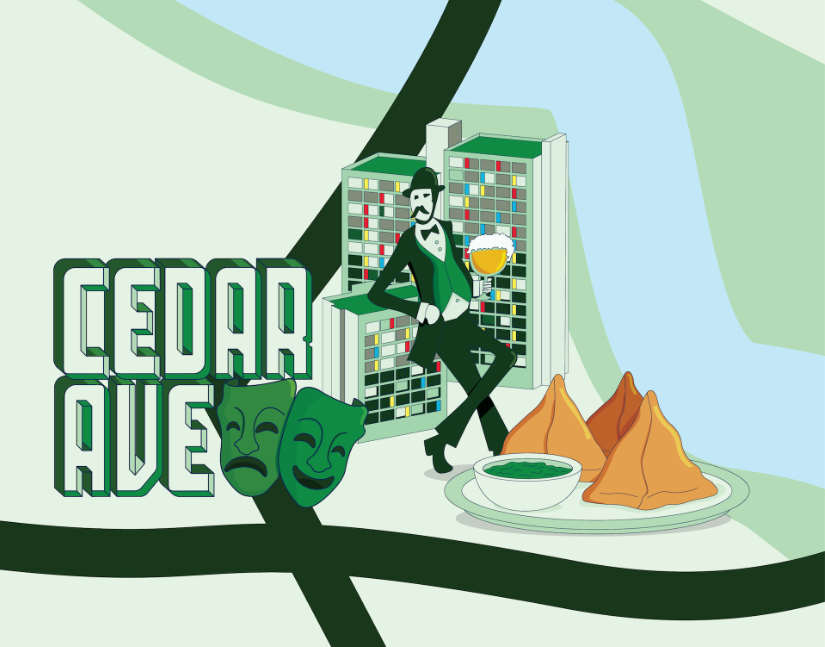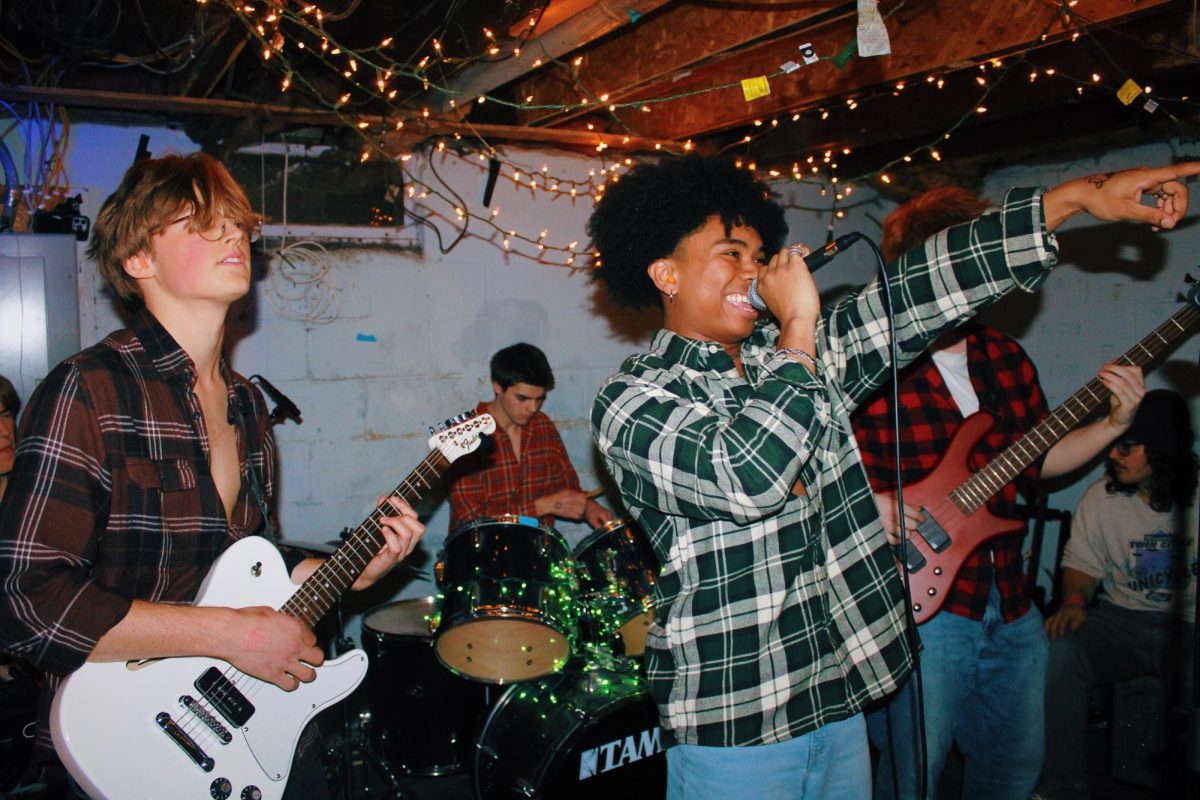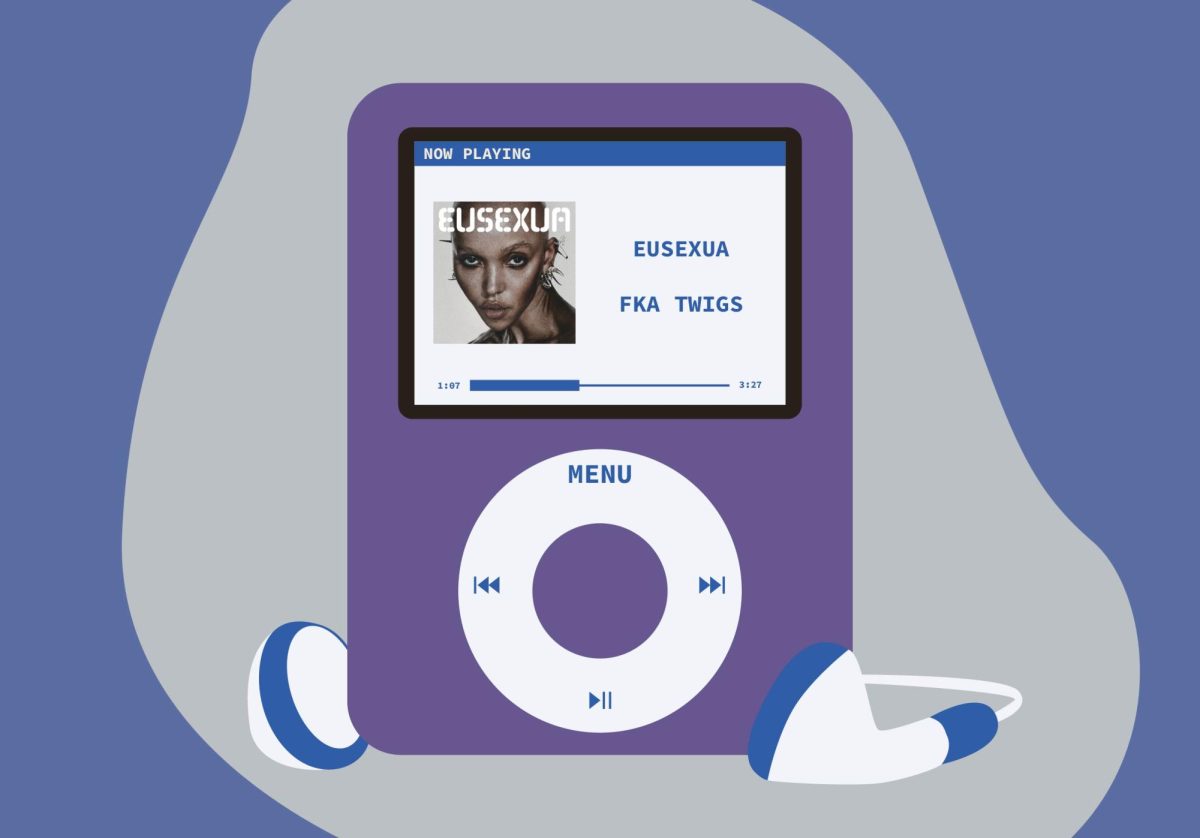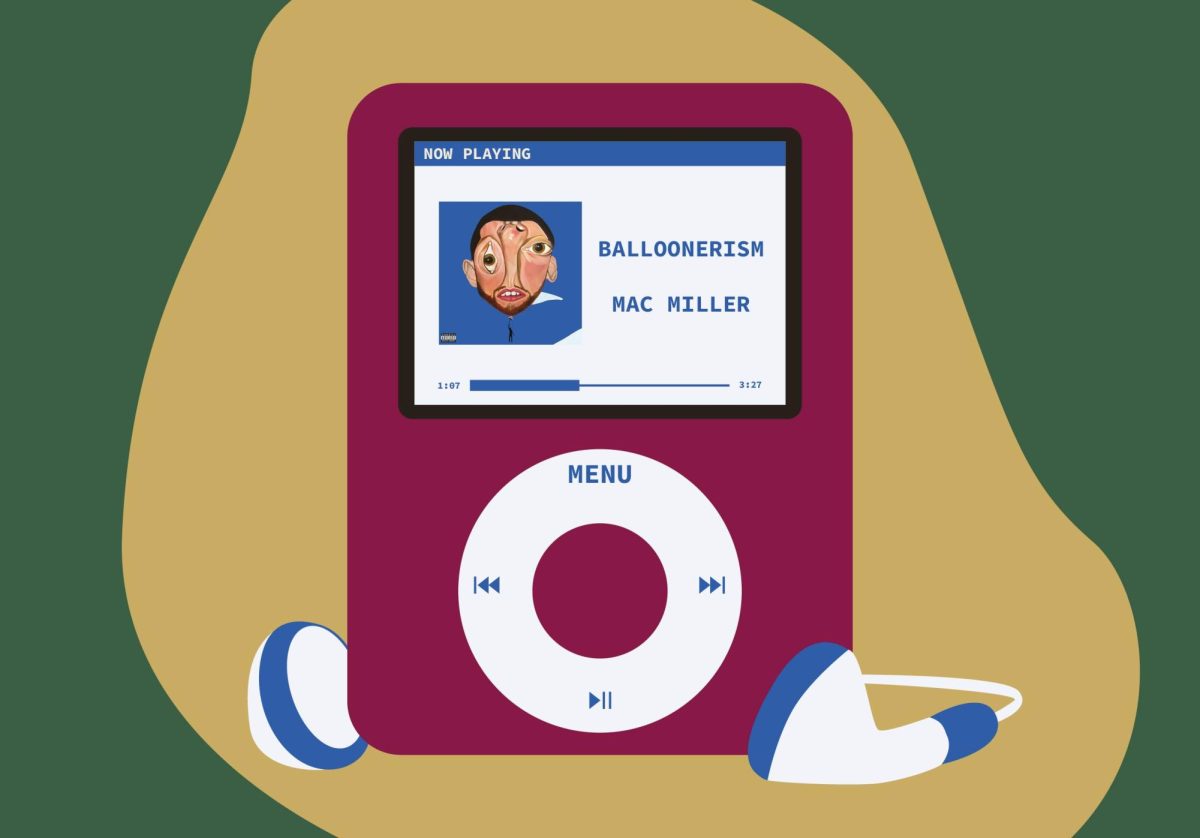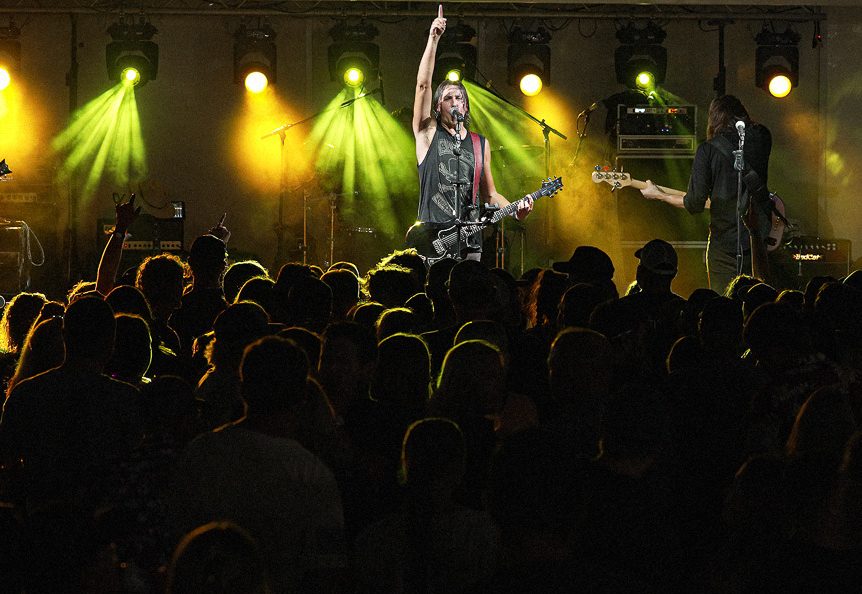Tucked away in a hallway on the second floor of the Regis Center for Art West in room W206 is the eStudio, a collaborative space where digital and material art converges.
Professor of Interdisciplinary Art and Social Practice Diane Willow started the eStudio in 2010. In the same room as basic markers and pens are sewing and embroidery machines, a robot that draws on the wall and an ultrasonic welder joining synthetic fabrics together that eStudio users can use to make inflatables.
The best part is it’s open to the University community.
“While we might focus on a particular major at the University, we also hold knowledge, passions and experiences that expand on the ways of knowing that define particular academic disciplines,” Willow said. “Each person has interests and skills that they can share with others in the eStudio.”
The eStudio grew out of the desire of art students to experiment across media and disciplines and to learn from each other in the process, according to Willow.
Calvin Stalvig, a third-year master’s student, was teaching a student how to use the circular knitting machine, a lap-sized mechanical instrument that creates knitted garments with the turn of a handle. He said it was much easier than actual knitting.
“It knits in the round –– long tubes –– you can make hats, mini dresses and skirts, and it also knits flat, so back and forth,” Stalvig said. “It’s pretty simple, you just turn it and it goes.”
Stalvig supports “anyone who’s interested in learning how to use the tools and technology in our space.”
The student he helped with the knitting machine was second-year master’s student Roya Nazari, who was knitting a long shawl for a sculpture featured in a Super 8 mm film she was making. As the black knitted garment pooled in the basket of the knitting machine, she said it was the first time she had ever used it.
The eStudio is a space that reflects the desires of the students, workers and faculty that use it, and Willow actively tries to avoid dedicating disproportionate resources to one discipline or medium. She said the knitting machine is part of a recent interest in fiber and textile arts.
Another part is Knit Tech, a block of time set aside from 1 p.m. to 4 p.m. on Tuesdays and Thursdays for anyone interested in learning how to knit.
“We have yarn, needles, stitch markers, all of the stuff you would need to learn how to make a hat or a pair of mittens,” Stalvig said. “Then if you are a knitter and you’re like, ‘Oh, I’m stuck, I don’t know how to do this next part [of my pattern],’ you can come and we can help with that.”
Willow pointed out that the placement of the eStudio in Regis West, down a tight hallway with nothing else but faculty offices beyond it, may make it seem more intimidating than it actually is.
However, she believes it is the warmth of the people who work in the eStudio that gets students to cross over the threshold.
“We prioritize making and sustaining a welcoming, inclusive and collaborative environment — these are core values of the eStudio,” Willow said.
At the core of the eStudio is learning to deconstruct the fear of failure and recognizing ourselves as syntheses of everything and everyone we interact and collaborate with, not just the subject we choose to study in school.
“The idea of failure is something that many of us internalize from prior learning contexts — especially when using new technologies,” Willow said. “We don’t expect that you will already know how to use the machines and materials before you come – it’s a place to develop your ideas and learn with your peers.”
And while visitors draw, learn to knit, finish a sewing project or harness the power of the glow forge, they can enjoy a warm cup of coffee or tea.
The eStudio will be having a clothing swap and open studio on Friday, Feb. 23 from 10 a.m. to 2 p.m. on the second floor of Regis West. Students are encouraged to bring clothes to exchange, then upcycle or repair them as they wish with eStudio workers standing by to help.


